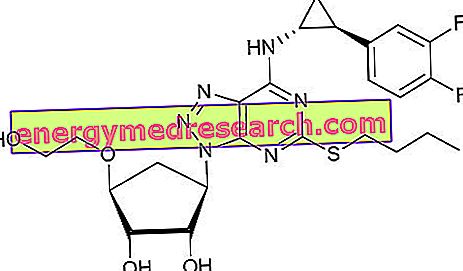Hazelnut or Avellana
Hazelnut oil is a condiment oil extracted from the fruit, or rather from the achene, of the hazelnut tree, known in botany as Corylis avellana (family Corylaceae or Betullacee, genus Corylus ).

The hazelnut is an achene also listed as "dried fruit"; from the nutritional point of view it contains large quantities of monounsaturated lipids (MUFA - 45.7 g / 100 g of edible portion), polyunsaturated (PUFA - 7.9 g) and only a small part of saturated lipids (4.5 g); proteins are around 15g and carbohydrates at around 16.7g. The hazelnut has good concentrations of vitamin E (tocopherols - 15.4mg), some water-soluble vitamins of group B (especially thiamine, riboflavin, niacin and pyridoxine), antioxidants (flavonoids and phytosterols), selenium (2.4µg), calcium (114mg ) and reduced water percentages (5.31g); these characteristics, associated with the "cold" extraction method (such as virgin olive oil) allow the quite profitable extraction (which reaches 60% of the weight) of an oil with good chemical and nutritional properties.
NB . Among the nutrients of the hazelnut ONLY some become part of the oil, or the chemically lipophilic molecules; then the triglycerides and free fatty acids, the vit. And, phytosterols and flavonoids. Calcium, selenium and water-soluble vitamins are present only in trace amounts.
Hazelnut oil
Hazelnut oil is slightly viscous, transparent or yellowish, odorless, with a sweet taste and a specific weight of 0.9242g at a temperature of + 15 ° C; solidifies at -10 ° C.
Hazelnut oil contains a high percentage of unsaturated lipids, which allows it to easily penetrate the skin without greasing (similarly or better than sweet almond oil), which is why, in addition to being a food, it is a suitable cosmetic for:
- Treatment of oily and acneic skin, on which it has a diluting and purifying action on occluded pores
- Dry skin massage in early childhood, on which it has a moisturizing action
- Breast fissures treatment (Besancon, 1862)
- Soap ingredient, up to 4-5% of the total weight
- Cosmetic ingredient of creams and other products.
NB . Hazelnut oil, both from a food and a cosmetic point of view, can give rise to allergic reactions.
Composition and differences with olive oil
The composition of virgin hazelnut oil is very close to that of virgin olive oil, although with some small differences linked to the distribution of fatty acids.
Hazelnut oil does NOT contain essential fatty acids (AGE) omega-3, while virgin olive oil has about 1% of total polyunsaturates (PUFA tot); that of hazelnut brings about 6% of AGE of the omega-6 family, while virgin olive oil is higher with a percentage of 10% compared to PUFA tot; on the other hand, the quantity of fatty acids of the omega-9 family seems greater in hazelnut oil with 86% of the total PUFA, unlike the virgin olive oil which reaches only (so to speak) 74 % of PUFA tot.
However, the prevailing quantity of fatty acids in hazelnut oil belongs to the MUFA, for a total of 78g / 100g of edible portion, to follow the PUFA with 10.2g / 100g and finally the saturated fatty acids (SFA) with 7, 4g / 100g. It does not contain cholesterol, but phytosterols (phytoestrogens) in an amount equal to 120mg / 100g of edible portion.
Food fraud
By virtue of its similarity to olive oil, hazelnut oil was frequently used (after adding chlorophyll) as an alien ingredient for fraudulent oil production in portions of about 10-20% of the total weight.
A striking example was discovered and published in a national newspaper 14 years ago; in the dedicated article, it was read of an inquiry opened and successfully concluded by the prosecutor's office of Trani aimed at the unmasking of a fraud for a value of several hundred billion lire. The offense in question provided for the purchase and use by NUMEROSE AZIENDE ITALIANE of oil obtained from foreign hazelnuts DETERIORATE (since the virgin and wholesome hazelnut oil would cost almost as much as the olive oil; while this altered barely reached the 400 lire / liter) then used to "cut" an oily mixture marketed under the name "olive oil"; the fraud was facilitated by the collaboration of several accomplices-intermediaries residing in Switzerland, Panama and the Virgin Islands.
This is made possible by the similarity of the lipid profile belonging to the two oils, a chemical aspect that can be easily understood from the image below, based on the text: Manual of oils and fats, P. Capella, New techniques, 11.42.

Technical detail: the diagram represents the gas chromatographic traces of extra virgin olive and hazelnut oils, obtained with the use of a capillary column having a polar type stationary phase (TAP, Chromopack).
Culinary use
Hazelnut oil is cold extracted, therefore it is a virgin oil; its use is similar to that of virgin olive oil, therefore (although it does not present the same olfactory and gustatory qualities) it is suitable both for raw seasoning and for cooking and frying (thanks to the considerable quantity of monounsaturated fats) ; if compared to rectified oils, the hazelnut oil shows a remarkable stability to heat, although less than that of virgin olive oil.
Bibliography:
- Feel good with olive oil - L. Caricato - New Techniques - page 68
- The book of oil and olive - G. Bigongiali - Calderini ed agricole - pag 121
- Practical dictionary of sciences and industries ; third party - G. Orosi - Livorno, at the expense of the publishers - pag 2380.
- Your natural soap. Methods, ingredients and recipes - P. Garzena, M. Tadiello - FAG Milan Editions - page 44
- Manual of oils and fats - P. Capella - new techniques - pag 11.42
- La Repubblica - 10 September 1999 - P. Antolini - pag. 30.



